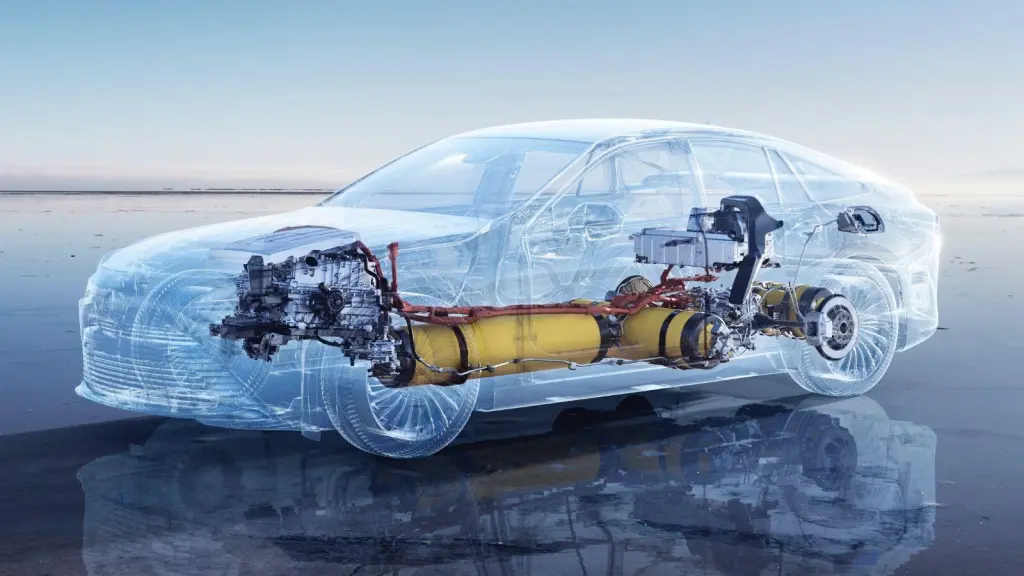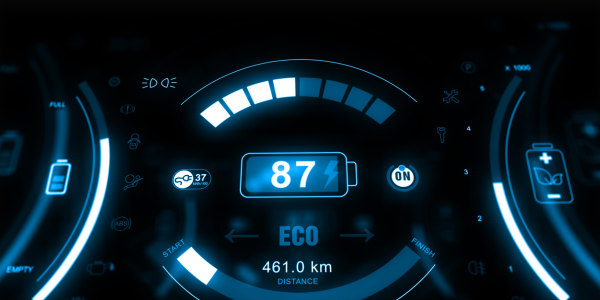Table of Contents
- Introduction
- Growth Aspects of Electric Vehicles compared to previous year.
- Conclusion
- Frequently Asked Questions
Introduction:
In recent years, the electric vehicles (EVs) industry has experienced unprecedented growth, signalling a significant shift in the automotive landscape. With advancements in technology, environmental concerns, and government incentives, the adoption of electric vehicles has surged worldwide.
This article aims to explore the current growth aspects of electric vehicles compared to the previous year, highlighting key factors driving this transition.
Growth Aspects of Electric Vehicles compared to the previous year.
1. Market Expansion:

- Global Sales Surge: Electric vehicle sales have witnessed a remarkable surge in the past year, with a notable increase compared to previous years. Countries like China, Europe, and the United States have seen substantial growth in EV adoption, driven by both consumer demand and regulatory policies promoting clean energy.
- Diverse Product Offerings: Automakers have expanded their electric vehicle offerings, introducing a wide range of models across various price points. From compact city cars to luxury SUVs, consumers now have a plethora of options to choose from, catering to different preferences and budgets.
- Infrastructure Development: Investments in charging infrastructure have accelerated, addressing one of the major concerns regarding EV adoption. Governments and private companies are collaborating to install charging stations in urban areas, along highways, and in residential complexes, enhancing the accessibility and convenience of electric vehicles.
2. Technological Advancements:

- Battery Technology: Significant advancements in battery technology have led to increased energy density, longer range, and faster charging capabilities. The development of solid-state batteries and improvements in lithium-ion batteries have made electric vehicles more practical and appealing to consumers.
- Vehicle Performance: Electric vehicles are no longer perceived as compromise machines. Instead, they offer superior performance, with instant torque delivery, smooth acceleration, and quieter operation compared to traditional internal combustion engine vehicles. This improvement in performance has contributed to the growing acceptance of EVs among consumers.
- Autonomous Features: Many electric vehicles now come equipped with advanced driver-assistance systems and semi-autonomous features, enhancing safety and convenience. From adaptive cruise control to automated parking, these technologies are reshaping the driving experience and attracting tech-savvy consumers to electric vehicles.
3. Environmental Awareness:

- Climate Change Concerns: Growing awareness about climate change and its adverse effects on the planet has prompted individuals and governments to seek sustainable alternatives to fossil fuel-powered vehicles. Electric vehicles, with their zero-emission operation, are seen as a crucial component of efforts to reduce greenhouse gas emissions and combat climate change.
- Regulatory Initiatives: Governments worldwide are implementing stringent emission regulations and offering incentives to promote electric vehicle adoption. Tax incentives, rebates, and subsidies make electric vehicles more affordable, encouraging consumers to make the switch to cleaner transportation options.
- Corporate Sustainability Goals: Corporations are increasingly integrating environmental sustainability into their business strategies, with many pledging to electrify their fleets and reduce carbon footprints. This corporate commitment to sustainability further drives the demand for electric vehicles and fosters innovation in the EV industry.
4. Consumer Preferences:

- Cost Savings: Electric vehicles offer long-term cost savings through lower fuel and maintenance costs. With the decreasing prices of EVs and the availability of government incentives, the total cost of ownership for electric vehicles is becoming increasingly competitive with conventional vehicles, making them an attractive option for budget-conscious consumers.
- Convenience and Comfort: Electric vehicles provide a more convenient and comfortable driving experience, with features like remote vehicle monitoring, over-the-air updates, and spacious interiors. The silent operation and smooth acceleration of electric motors enhance the overall driving experience, appealing to a wide range of consumers.
- Social Influence: The growing trend of environmental consciousness and sustainability advocacy has influenced consumer preferences, with many individuals opting for electric vehicles as a way to align their transportation choices with their values. Peer influence and social media also play a significant role in promoting electric vehicle adoption and shaping consumer perceptions.
5. Infrastructure Investment:

- Government Funding: Governments are allocating substantial funds towards the development of EV infrastructure, including charging stations, grid upgrades, and research into new charging technologies. This investment is crucial for overcoming range anxiety and ensuring the widespread adoption of electric vehicles.
- Public-Private Partnerships: Collaboration between government agencies, utility companies, and private enterprises is accelerating the deployment of EV charging infrastructure. Partnerships streamline the permitting process, reduce installation costs, and increase the coverage of charging networks, facilitating EV adoption for consumers.
- Fast-Charging Networks: The establishment of fast-charging networks along major highways and in urban centres is critical for enabling long-distance travel and addressing the needs of urban EV owners. High-power charging stations capable of delivering rapid charging speeds are becoming more prevalent, making EV ownership more practical for a broader range of drivers.
6. Supply Chain Resilience:
- Raw Material Sourcing: The electric vehicle industry relies on a complex global supply chain for raw materials such as lithium, cobalt, and nickel, essential for battery production. Ensuring a stable and sustainable supply of these materials is crucial for meeting the growing demand for electric vehicles and mitigating supply chain disruptions.
- Localization Efforts: To reduce dependence on foreign suppliers and minimize supply chain risks, some manufacturers are exploring opportunities to localize production and sourcing of critical components. Establishing domestic supply chains for battery manufacturing and other key components enhances resilience and supports local economies.
- Circular Economy Initiatives: Recycling and reuse of materials from end-of-life electric vehicle batteries are gaining traction as part of efforts to create a circular economy. Recycling programs and research into battery recycling technologies are essential for minimizing environmental impact and conserving valuable resources.
7. Government Policy Support:

- Emission Targets: Many governments have set ambitious targets to reduce greenhouse gas emissions from the transportation sector, driving the adoption of electric vehicles. Emission regulations, vehicle electrification mandates, and zero-emission vehicle (ZEV) credits incentivize automakers to accelerate the transition to electric propulsion systems.
- Tax Incentives and Rebates: Tax credits, rebates, and other financial incentives play a significant role in promoting electric vehicle adoption by reducing upfront costs for consumers. These incentives make electric vehicles more affordable and help offset the higher initial purchase price compared to conventional vehicles.
- Regulatory Frameworks: Governments are developing comprehensive regulatory frameworks to support the deployment of electric vehicles, including building codes, zoning regulations, and vehicle emissions standards. By integrating electric vehicle considerations into urban planning and infrastructure development, policymakers aim to create an enabling environment for sustainable mobility.
8. R&D and Innovation:
- Battery Technology Breakthroughs: Ongoing research and development efforts are focused on improving battery performance, durability, and safety. Innovations such as solid-state batteries, advanced electrolytes, and battery management systems are poised to revolutionize the electric vehicle industry, enabling longer range and faster charging times.
- Vehicle Design and Efficiency: Automakers are investing in lightweight materials, aerodynamic designs, and energy-efficient systems to enhance the efficiency of electric vehicles. Streamlined vehicle architecture, regenerative braking, and thermal management technologies optimize energy utilization and extend driving range, improving the overall value proposition for consumers.
- Integration of Renewable Energy: The convergence of electric vehicles with renewable energy sources such as solar and wind power offers opportunities for synergistic solutions. Vehicle-to-grid (V2G) technology, smart charging algorithms, and energy storage systems enable electric vehicles to serve as distributed resources for grid stabilization and renewable energy integration.
Conclusion:
The growth of electric vehicles in the current year compared to previous years reflects a transformative shift in the automotive industry towards sustainable transportation. With advancements in technology, supportive government policies, and changing consumer preferences, electric vehicles are poised to become the future of mobility. As the industry continues to innovate and evolve, electric vehicles will play a crucial role in shaping a cleaner, greener, and more sustainable future for generations to come.
The unprecedented growth of electric vehicles in the current year compared to previous years marks a pivotal moment in the evolution of transportation. This surge is driven by a convergence of factors, including technological advancements, supportive government policies, infrastructure investments, supply chain resilience, and ongoing research and innovation. As the automotive industry undergoes a profound transformation, electric vehicles are emerging as the cornerstone of a cleaner, greener, and more sustainable future.
With each passing year, the electric vehicle market expands and matures, offering consumers an increasingly diverse array of options that rival traditional internal combustion engine vehicles in performance, convenience, and affordability. From compact city cars to luxury SUVs, electric vehicles cater to a wide range of preferences and lifestyles, empowering consumers to make environmentally conscious choices without compromising on comfort or utility.
Behind the scenes, a robust ecosystem of stakeholders, including governments, automakers, technology providers, utilities, and research institutions, collaborates to overcome barriers and accelerate the transition to electric mobility. Public-private partnerships drive investments in charging infrastructure, while regulatory frameworks and incentives incentivize electric vehicle adoption and innovation. Meanwhile, advancements in battery technology, vehicle design, and renewable energy integration push the boundaries of what is possible, paving the way for a future where electric vehicles are the norm rather than the exception.
As we look ahead, the momentum behind electric vehicles shows no signs of slowing down. Corporate commitments to sustainability, public awareness of climate change, and the imperative to reduce air pollution in urban areas further bolster the case for electric mobility. By embracing electric vehicles, we not only mitigate the environmental impact of transportation but also unlock new economic opportunities, create jobs, and build resilient communities.
In closing, the growth of electric vehicles in the current year underscores a fundamental shift towards a more sustainable and equitable transportation system. As we navigate the challenges and opportunities ahead, let us continue to champion innovation, collaboration, and responsible stewardship of our planet. Together, we can drive towards a future where electric vehicles are not just a choice but a cornerstone of a brighter, cleaner, and more prosperous world for generations to come.
Frequently Asked Questions:
The increased adoption of electric vehicles driven by several key factors. These include advancements in battery technology, which have improved range and charging times, as well as a growing emphasis on environmental sustainability. Government incentives and regulations promoting clean transportation, along with the expansion of charging infrastructure, have also played significant roles in encouraging consumers to switch to electric vehicles.
Electric vehicles are becoming increasingly competitive with traditional gasoline-powered vehicles in terms of both cost and performance. While electric vehicles may have a higher upfront cost, they often offer lower long-term operating costs due to savings on fuel and maintenance. In terms of performance, electric vehicles are known for their instant torque delivery, smooth acceleration, and quiet operation, providing a comparable or even superior driving experience to traditional vehicles.
Government policies and incentives play a crucial role in promoting the adoption of electric vehicles. Many governments offer financial incentives such as tax credits, rebates, and subsidies to offset the higher upfront costs of electric vehicles and make them more affordable for consumers. Additionally, regulatory measures such as emissions standards and vehicle electrification mandates encourage automakers to invest in electric vehicle development and production.
The charging infrastructure for electric vehicles is evolving rapidly to support the growing number of electric vehicles on the road. Governments, utility companies, and private investors are investing in the deployment of charging stations in urban areas, along highways, and at workplaces and residential complexes. Fast-charging technologies are also being developed to reduce charging times and increase the convenience of electric vehicle ownership.
Switching to electric vehicles offers several environmental benefits compared to traditional gasoline-powered vehicles. Electric vehicles produce zero tailpipe emissions, reducing air pollution and greenhouse gas emissions that contribute to climate change. Additionally, electric vehicles can be powered by renewable energy sources such as solar and wind power, further reducing their environmental impact over their lifecycle.

